Animal & Plant Cells
Animals
- The main features of animals:
- They are multicellular
- Their cells contain a nucleus with a distinct membrane
- Their cells do not have cellulose cell walls
- Their cells do not contain chloroplasts (so they are unable to carry out photosynthesis)
- They feed on organic substances made by other living things
- They often store carbohydrates as glycogen
- They usually have nervous coordination
- They are able to move from place to place
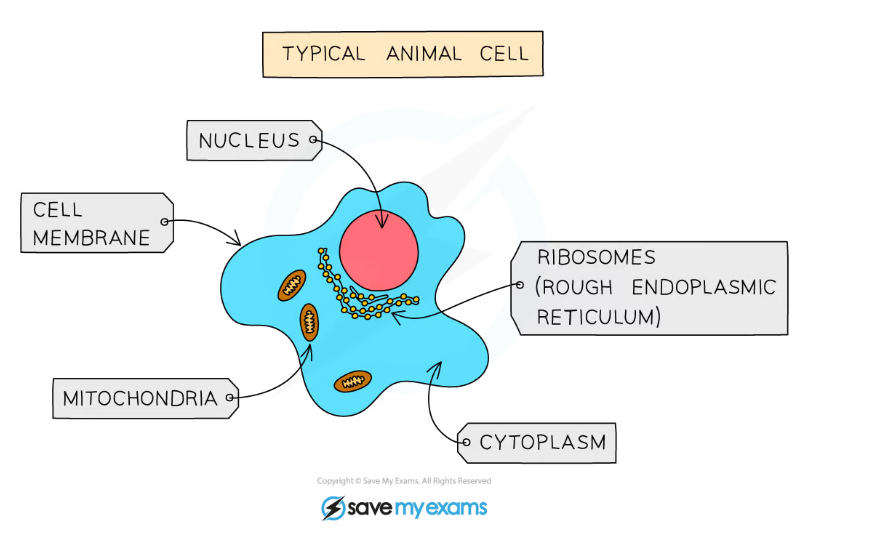 A typical animal cell
A typical animal cell
Plants
- The main features of plants:
- They are multicellular
- Their cells contain a nucleus with a distinct membrane
- Their cells have cell walls made out of cellulose
- Their cells contain chloroplasts (so they can carry out photosynthesis)
- They feed by photosynthesis
- They store carbohydrates as starch or sucrose
- They do not have nervous coordination
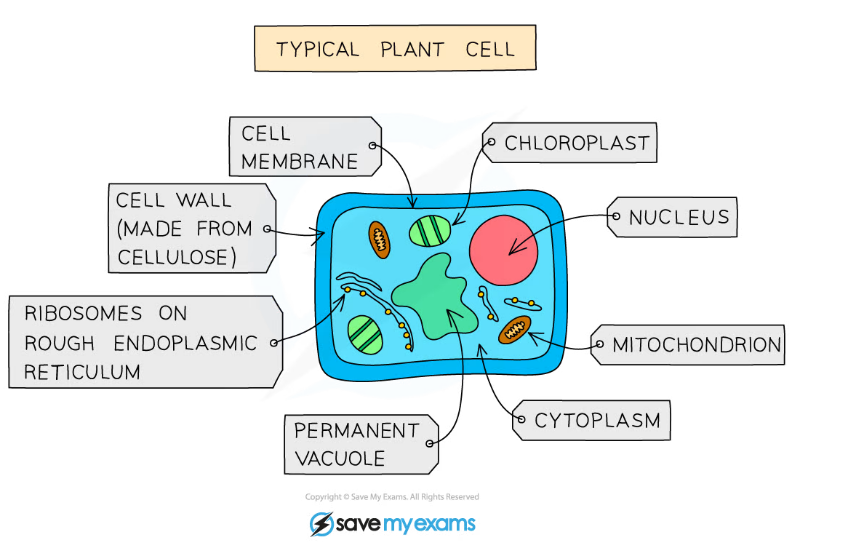
A typical plant cell
Cell Structures Found in Both Animal and Plant Cells Table
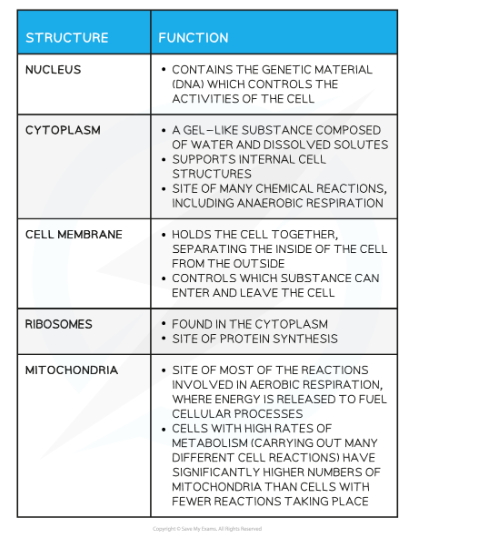
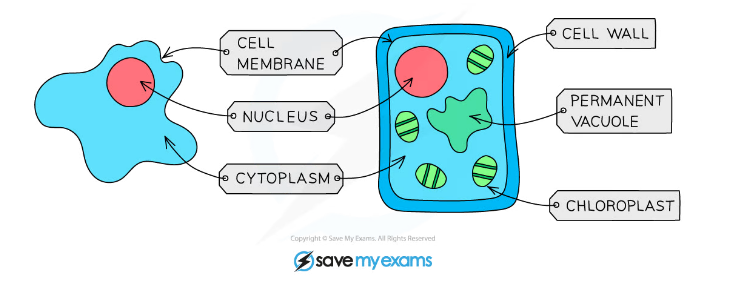
An animal and plant cell as seen under a light microscope
Cell Structures Found Only in Plant Cells Table
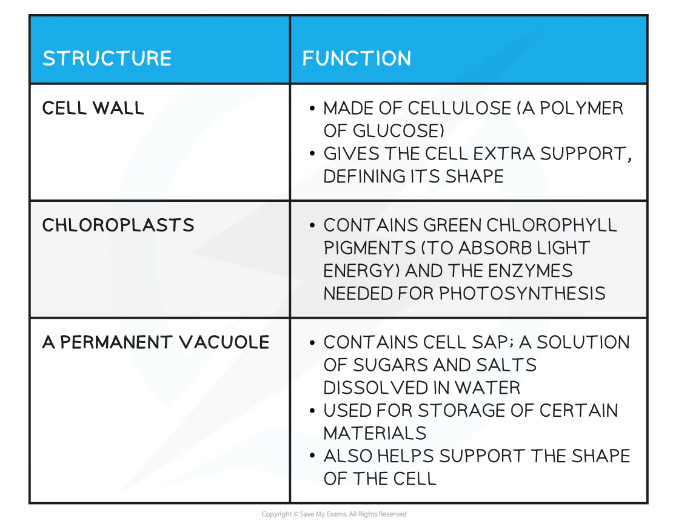 Bacteria Cells
Bacteria Cells
- Bacteria, which have a wide variety of shapes and sizes, all share the following biological characteristics:
- They are microscopic single-celled organisms
- Possess a cell wall (made of peptidoglycan, not cellulose), cell membrane, cytoplasm and ribosomes
- Lack a nucleus but contain a circular chromosome of DNA that floats in the cytoplasm
- Plasmids are sometimes present - these are small rings of DNA (also floating in the cytoplasm) that contain extra genes to those found in the chromosomal DNA
- They lack mitochondria, chloroplasts and other membrane-bound organelles found in animal and plant cells
- Some bacteria also have a flagellum (singular) or several flagella (plural). These are long, thin, whip-like tails attached to bacteria that allow them to move
- Examples of bacteria include:
- Lactobacillus (a rod-shaped bacterium used in the production of yoghurt from milk)
- Pneumococcus (a spherical bacterium that acts as the pathogen causing pneumonia)
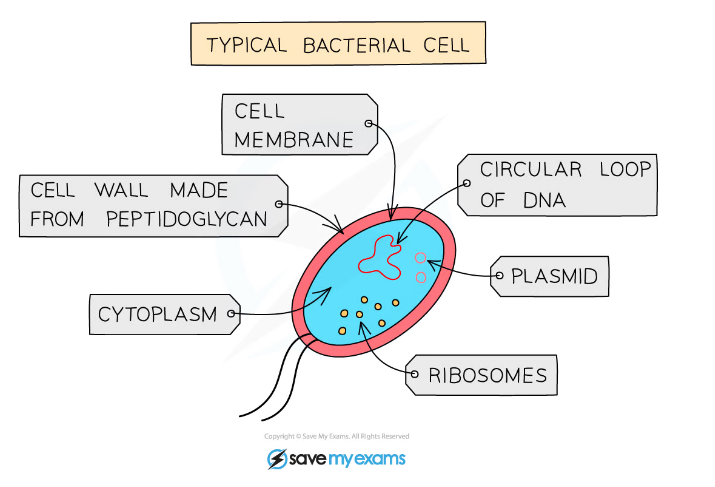 A typical bacterial cell
A typical bacterial cell
Identifying Cell Structures & Function
- Within the cytoplasm, the following organelles are visible in almost all cells except prokaryotes when looking at higher magnification (ie using an electron microscope):
- Mitochondria (singular: mitochondrion) are organelles found throughout the cytoplasm
- Ribosomes are tiny structures that can be free within the cytoplasm or attached to a system of membranes within the cell known as Endoplasmic Reticulum
- Endoplasmic reticulum studded with ribosomes looks rough under the microscope; this gives rise to its name of Rough Endoplasmic Reticulum (often shortened to R.E.R.)
- Vesicles can also be seen using a higher magnification - these are small circular structures found moving throughout the cytoplasm
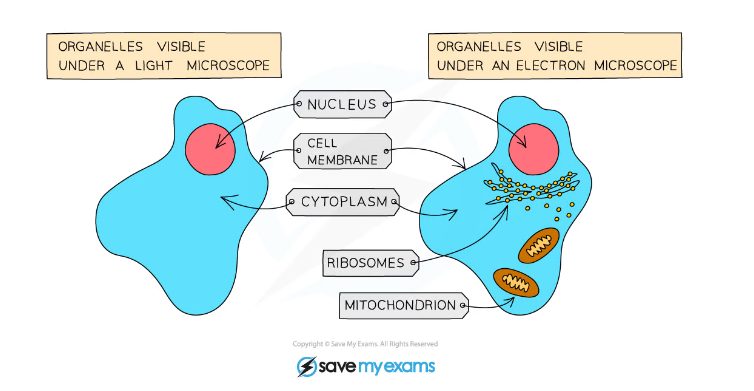 Structures in an animal cell visible under a light microscope and an electron microscope
Structures in an animal cell visible under a light microscope and an electron microscope
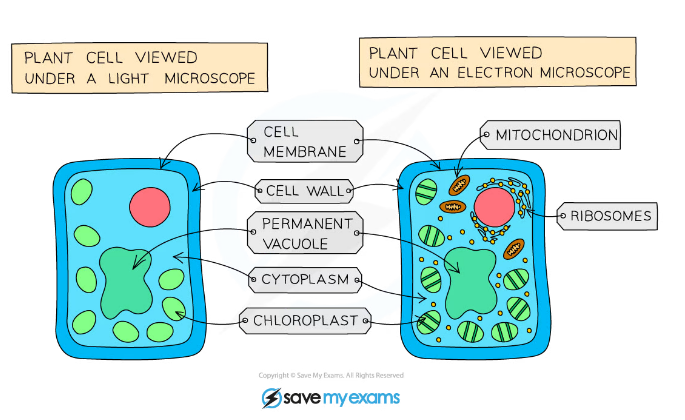 Structures in a plant cell visible under a light microscope and an electron microscope
Structures in a plant cell visible under a light microscope and an electron microscope










